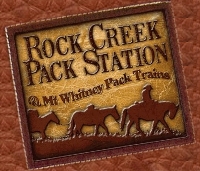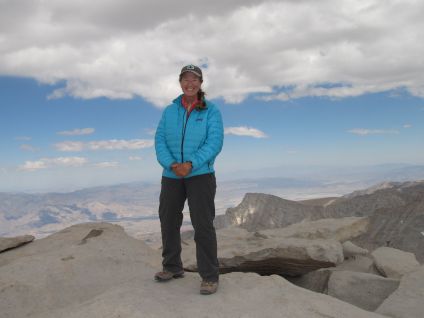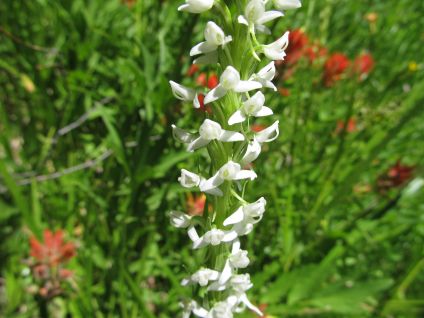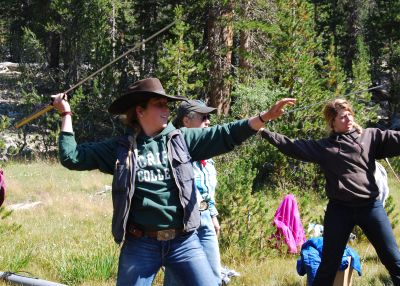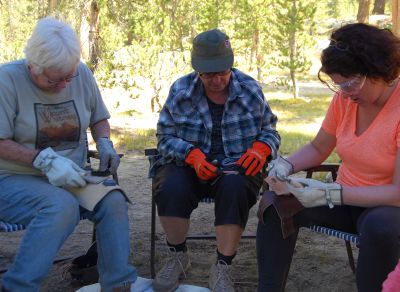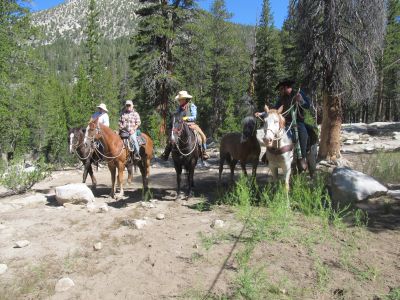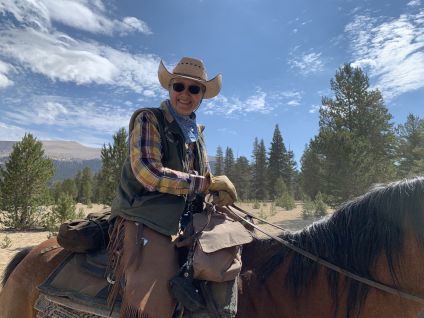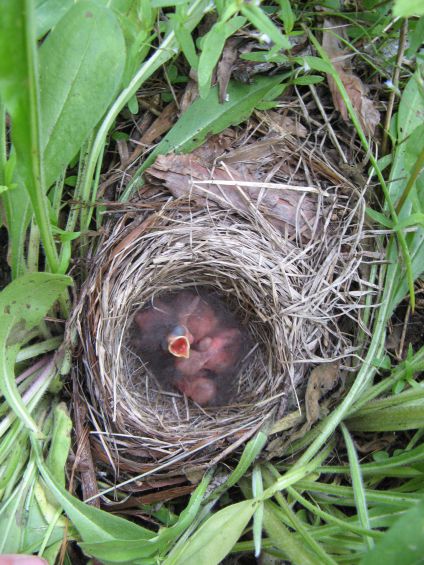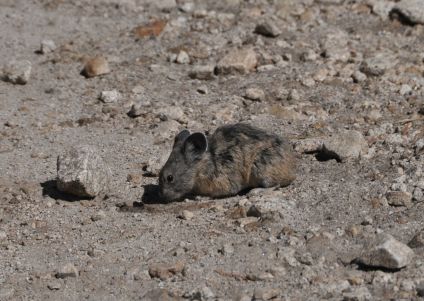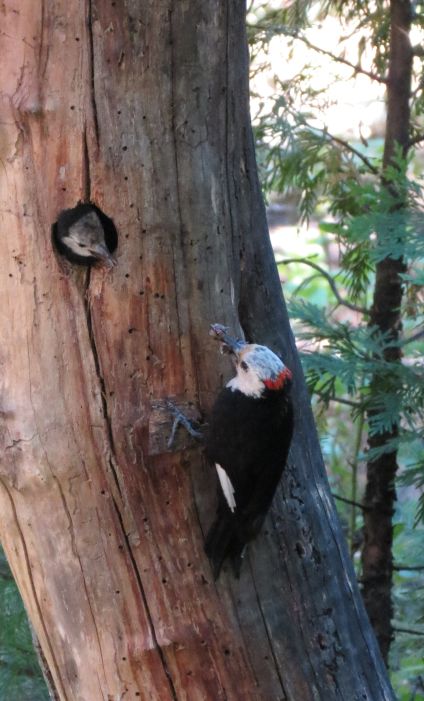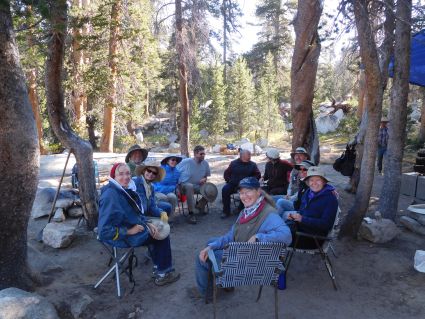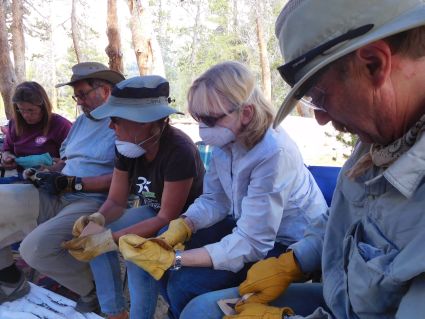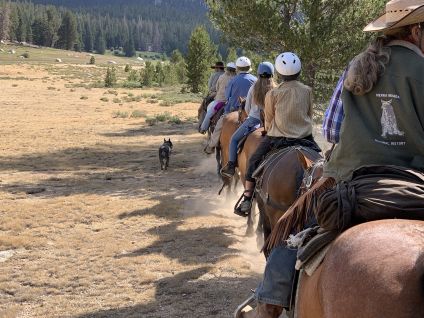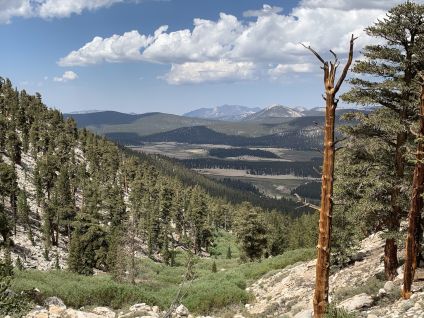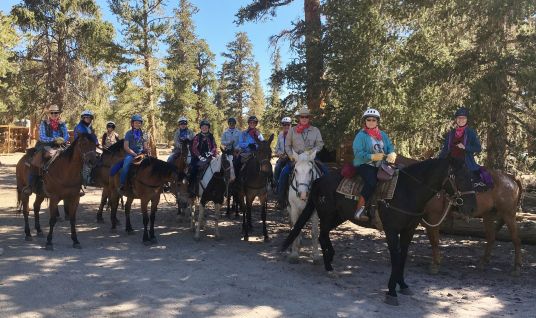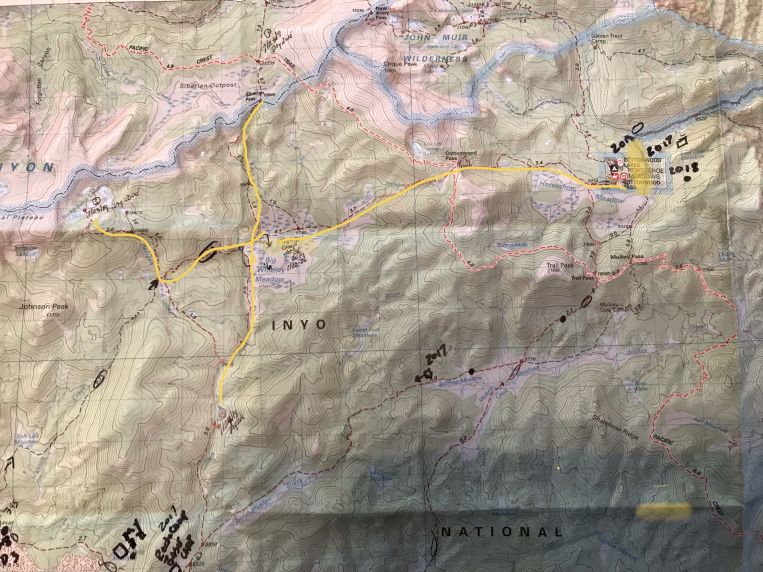Trip Overview:
This trip is operated by Rock Creek Pack Station dba as Mt. Whitney Pack Trains.
Start and end at Cottonwood Pack Station (at Horseshoe Meadows west of Lone Pine, CA)
Immerse yourself in the Natural History of the Sierra Nevada.
Join Fulbright Scholar and retired National Park Ranger Dr. Nancy Muleady-Mecham for a once in a lifetime chance to learn all about these mountains and the nature within them. We will explore the night sky in the truly dark skies of the backcountry. We’ll learn about animal adaptations, birds and mammals; Sierra geology, glaciation, and weather; dendrochronology (the science of tree-ring dating), the mixed conifer and alpine forests, wildflowers, fire ecology; and indigenous people through time. You will learn to make arrowheads and to use an atlatl (ancient spear-thrower). Bring binoculars, cameras and your sense of wonder.
Open to everyone over 13-years-of-age. If you have a person younger than 13 that would like to participate and you feel this trip is right for them, contact Doc Nancy at:
Nancy.Muleady-Mecham@nau.edu.
SCHEDULE
DAY 1
|
DAY 2
|
DAY 3
|
DAY 4
|
DAY 5
|
Breakfast at Pack Station *
Introductions and program outline |
Breakfast
Bird walk (BYO Binoculars) & Bird biology |
Breakfast
Day ride to mixed conifer and aspen forest |
Breakfast
People Through Time – How Humanity Came To the Sierra |
Breakfast
Break Camp |
| Ride to Base camp at
Big Whitney Meadow
|
Day ride to
Rocky Lakes Basin
The Alpine World of Nature |
The Mixed Conifer Forest |
Atlatl Throwing and Making Arrowheads
(Atlatl throwing, and making arrowheads, supplies provided; BYO leather gloves) |
Head on out to Cottonwood Pack Station (Horseshoe Meadow)
Sierra Nevada Natural History: Preservation and Conservation
|
Lunch
Geology (magnifying lenses provided)
Continue to camp |
Lunch
Explorers and the High Sierra
Wildflowers and meadows |
Lunch
Dendrochronology
(Tree ring cores provided)
Succession and Ecology |
Lunch
Day Ride to Siberian Outpost
Gold and Minerals (mineral program) |
Lunch |
Base Camp
Free Time |
return to camp
Free Time |
return to camp
Free Time |
return to camp
Free Time |
Arrive
Horseshoe Meadow Trailhead / Cottonwood Pack Station |
Dinner
Climate, Weather and Glaciers
++ |
Dinner
Astronomy - The Night Sky ++ 9pm |
Dinner
Animals, adaptations, and bear biology
(skins, skulls, & stories)
Twilight Walk
(Bat detector & Night Vision monocular provided; crepuscular critters)
|
Dinner
Songs and Stories |
|
*Horseshoe Meadow Trailhead -- Cottonwood Pack Station
++If there is a chance of clouds, this may be the first night or later in the week
|
Day 1: Cottonwood Pack Station (Horseshoe Meadow Trailhead) to our base camp. (The specific campsite location will be dependent upon the ground conditions).
Meet at 7am for breakfast and prep to ride. (It is suggested that camping out the night before at Horseshoe Meadow Campground will help with acclimatization to the 10,000’ elevation).
We head east through a beautiful Lodgepole pine forest adjacent to meadows with Belding ground squirrels. We then ride switchbacks to Cottonwood pass at 11,000’ then start down toward out base camp at Big Whitney Meadow (10.000’). The views beyond show peaks of the Great Western Divide in Sequoia National Park where Big Horn sheep again roam in their historic range. At lunch we will discuss the Geology of the Sierra Nevada and the incredible forces that carved them, including rivers and glaciers.
After we settle into camp and have an incredible dinner, we sit around the fire and discuss weather, climate, and how that plays a part is hiker preparedness and, at times search and rescue. (Should the weather forecast show clouds for the next days we may have our astronomy night tonight). The calls of the frogs and coyotes at night are sublime.
Day 2: Breakfast and then an introduction to birds and bird biology. We will walk through a variety of environments, creek, meadow, forest, and the all-important edges where these areas come together. Bring binoculars.
We’ll have made our lunches and now take a day ride to Rocky Basin lakes. The spectacular double headwall is unique in the glacially carved Sierra and in these lakes are where endangered Yellow-legged frogs have been reintroduced. The trail crosses meadows and forest and begins a climb. Along the way we can see Alpine paintbrush, Evening primrose, carpets of red and yellow monkey flowers, shooting stars, buttercups, columbine and more. At the lakes we will have lunch and talk about the Alpine environment and wildflowers. We will also learn about the early explorers of the Sierra.
After the sun sets we will look at the Night Sky and learn the stars, planets, constellations, and the stories behind them. (Unless we have had to present this the night before).
Day 3: Today’s day ride we will travel leisurely down Golden Trout Creek. The trail parallels the creek cascading to the side of the route and contains endemic Golden trout. There are a wide variety of flowers and shrubs as we descend. Before and after lunch, we will discuss the mixed conifer forests, trees, succession, and dendrochronology, the study of tree rings and what they can tell us.
After dinner we will have the Wild World! Skins and skulls and stories about animals and their adaptations, including bear biology.
In the evening we will have a twilight walk. How things change in the evening will be discovered as we use a Bat Detector to “hear” the many bats above us, our Night-Vision Binoculars, and Ultraviolet black light to search out night-time critters.
Day 4: After breakfast we will start our journey through time, following people from around the world and how they eventually came to the Sierra Nevada. Who were they, what did they hunt, gather and eat? Who did they trade with? Then you will learn how they survived by participating in activities that have been lauded as some of the most fun of the trip. You will learn to use an actual atlatl, an ancient spear thrower, and throw them at a target. As your skill quickly increases, there is always a friendly competition as to who will “bring home the supper!” Then we will learn to make arrowheads. Obsidian and flint chert, and ancient and modern tools will be provided as you learn this craft and gain an appreciation for how difficult it is. Bring leather gloves.
After lunch we will ride to Siberian Outpost. A ride through our glacially-carved valley brings us to a delightful little used trail to Siberian Outpost where we enter Sequoia National Park. This open boreal plateau surrounded by trees is a place Paleo-Indians hunted. Arrowheads have been dated by park archaeologists to over 6.500 years-old. We will learn about the minerals in the granite and in particular, gold. The history of the Gold Rush and how gold was mined will be discussed. Then lunch as you relax in the peace of the mountains.
That evening in camp we will again sit around the campfire. Your guide, Doc Nancy, will have a guitar and provide song books and stories on our last night in camp.
Day 5: We break camp and head out along our entry trail to Cottonwood Pass (5 hour ride). Lunch just below the pass will allow a final thought on conservation and preservation that made this backcountry possible.
Remember to bring binoculars and leather gloves. Open to everyone over 13-years-of-age. If you have a person younger than 13 that would like to participate and you feel this trip is right for them, contact Doc Nancy at: Nancy.Muleady-Mecham@nau.edu.
“In accordance with Federal law and U.S. Department of Agriculture (USDA) civil rights regulations and policies, this institution is prohibited from discriminating on the basis of race, color, national origin, sex, age, disability, and reprisal or retaliation for prior civil rights activity. (Not all prohibited bases apply to all programs.)
Persons with disabilities who require alternative means of communication for program information (e.g., Braille, large print, audiotape, American Sign Language, etc.) should contact the responsible State or local Agency that administers the program or USDA’s TARGET Center at (202) 720-2600 (voice and TTY) or contact USDA through the Federal Relay Service at (800) 877-8339. Additionally, program information is also available in languages other than English.
To file a complaint alleging discrimination, complete the USDA Program Discrimination Complaint Form, AD-3027, found online at http://www.ascr.usda.gov/complaint_filing_cust.html, or at any USDA office or write a letter addressed to USDA and provided in the letter all of the information requested in the form. To request a copy of the complaint form, call (866) 632-9992. Submit your completed form or letter to USDA by: (a) mail: U.S. Department of Agriculture Office of the Assistant Secretary for Civil Rights, 1400 Independence Avenue, SW, Washington, D.C. 20250-9410; (b) fax: (202) 690-7442; or (c) email: program.intake@usda.gov.”
What you need to know…
What you need to know…for riders
(TRAIL RIDE, ALL EXPENSE, AND BASE CAMP INFORMATION)
OUR SERVICES
We supply horses, saddles, food, kitchen and eating utensils, and camping equipment. Dormitory tents will be provided for men and women. Private tents for couples or singles will be reserved by request. Food will be plentiful and deluxe in quality. We provide the preparation of meals; any help is appreciated but not mandatory. Those desiring to learn how to pack may participate in making up loads and packing the mules.
IMPORTANT INFORMATION
- Check-in time is 7 a.m. at Rock Creek Pack Station except when OTHER LOCATION is specified.
- Free parking for guests' cars at pack station.
-
Breakfast is served the first day while the mules are being loaded.
The last meal furnished is lunch the last day.
- We provide a small saddle bag for trail necessities. Please do not bring your own saddle bags or day packs unless they
are pocket size. Participants may not carry large camera
cases with extra lenses on the saddle. If you have extra camera equipment, it can be packed in your duffel or in a
safe place on mules.
-
You will be limited to 3 lbs. in the saddle bag, which includes your lunch.
Your jacket and rain gear are not included in the 3 lbs. and may be tied on the back of the saddle. No day packs allowed on riders' backs.
- Each person is assigned a horse for the duration of the trip with regard to the guest's weight, height, and ability.
- Dunnage limit is 30 lbs. per person (this includes sleeping bags, fishing equipment, liquor, etc.).
There will be a surcharge of $3 to $10 per pound on dunnage in excess of the 30 lbs. You may bring your own tent if under 10 lbs. which will not be included in 30 lb. weight limit.
- Trip fee does not include alcoholic beverages or lodging night before and after trip.
- Gratuities are optional and a personal choice.
- Trip will terminate in the late afternoon of last day.
- Free shuttle back to Rock Creek Pack Station for trips terminating at other road heads.
- Reservation form must be accurately completed.
The information on age, height, weight and riding ability is used to assign riding animals. Failure to provide accurate information may result in the participant being denied going on the trip with loss of trip fee.
- We advise guests to purchase cancellation and trip travel insurance.
- Participants will be sent an assumption of risk and a liability release form. All guests must assume the risk and sign the forms before using Rock Creek's service. Our forms have excellent guidelines for riding safety that we ask you to study.
- The pack station does not boil or treat water. Campsites are remote enough that we feel safe in using the water. It you want to purify water bring your own filter pump or purification tablets.
PERSONAL CHECK LIST
Bring belongings in stout canvas or nylon duffels; side zipper recommended, ideal size approximately 14" x 32".
It is a good idea to use a large plastic bag INSIDE of the duffle to protect contents from external moisture.
Sleeping bags can be in separate duffels --again, line the inside of the duffle against rain.
Place all cosmetics, soaps, medications, etc into small plastic containers with close-fitting caps,
THEN into sturdy resealable plastic storage bags.
If anything breaks or bursts from altitude changes, the plastic bag contains the spill.
When possible, it is a good idea to transfer alcoholic beverages to sturdy plastic bottles with well fitting caps - it will save weight and protect against breakage.
Check in fishing worms and bottle goods separately; don't put in duffel. Place fishing rods in metal or plastic cases.
You will be given a small saddle bag that goes on your saddle horn to carry your lunch and a few personal items. (Weight limit 3 lbs - including lunch).
Remember - try to minimize the weight of your dunnage by packaging only
the amount of any item you will need (like soaps, lotions and medications).
RECOMMENDED ITEMS:
- Sleeping bag with a comfort range of 20 to 60 degrees and a moisture proof ground cloth.
- Air mattress or small 1/4"-1/2" foam hip pad recommended - your night's rest will affect your next days enjoyment.
Bring the best sleeping pad you can manage.
- Broad-brimmed hat is essential for protection from sun at high altitude. It must have strings to keep from blowing off.
- Sunglasses (RX glasses) - high altitude sun is BRIGHT!
- Coffee mug (plastic for camp)
- Pint water bottle for your horn bag
- Pocket knife or small multi-tool
- Flashlight and extra batteries
- Camera and film (sturdy strap)-- if using digital - don't forget an extra battery and card
- Rain jackets and pants or slicker (rolled up you can tie them to the back of your saddle)
- Hat protector (to keep your hat dry)
- Light jacket (windbreaker)
- Wool or fleece pullover/sweater (layers will keep you comfortable)
- Heavy jacket
- Bandana
- Woolen cap (evenings can be cold)
- Gloves (recommend gloves for riding, may want warm gloves for evenings)
- Socks
- Riding boots
- Shoes for camp (moccasins, athletic shoes, etc)
- Shirts and pants (long sleeved shirts offer sun, bug and branch protection)
- Underwear
- Bathing suit
- Bath towel/wash cloth/soap (try a multi-use bar or liquid for use on hair, body and laundry. Biodegradable choices are available.)
- Insect repellent such as Cutters
- Toothbrush/toothpaste
- comb/brush clips/pins/ponytail holders
- Shaving kit (a small mirror is helpful)
- Sun Screen (lotion, cream or stick)- use liberally for sunburn and chapping prevention.
- Chapstick with sun protection SPF 15 or better
- Moisturizer (cream or lotion - altitude and sun can be dry and chap skin)
- Prescription medicine (if required - if you have any allergies, remember to bring appropriate medication)
- Band-aids, aspirin, ibuprofen, eye drops, moleskin for any blisters
- Baby powder/Talcum powder (helps to relieve any raw or irritated areas from boots, clothes or saddles)
- Kleenex
- Jogging suit (sweats are comfortable for after-swim and campfire lounging)
OPTIONAL ITEMS:
- Small notepad and pencil
- Collapsible plastic wash basin (optional)
- Solar shower (optional)
- Water filtering pump (optional)
- Liquor (be sure to check in with the packers to see that your liquor is packed safely)
- Fishing equipment (optional)
- CALIFORNIA FISHING LICENSE. Please note that fishing licenses are NOT available at or near the pack station. Be sure to get one BEFORE you arrive for your adventure. You can find information on California fishing licenses and online purchase at TakeMeFishing.org. You can purchase them at a Bishop sporting goods store, as well.
- Rod/reel/line (a rod that breaks down into 3 or more pieces is recommended)
- Compact metal rod case to carry on saddle
- Canvas creel (no tackle boxes)
- Leader material (1-3 lb.)
- Flies: black gnat, mosquito, grey hackle, brown hackle, & royal coachman (No. 12-14 hooks)
- Bait: worms & Pautzke red eggs
- Egg hooks, worm hooks (No. 10-14)
- Split shot
- Lures (personal choice)
- Pliers
LOW-IMPACT GUIDE FOR THE WILDERNESS USER
We are dedicated to conducting our trips so that others following us will find the country unspoiled. Livestock is a natural part of the wilderness and when properly managed enhances man's enjoyment of our unmechanized wilderness area. Today, just as it was when the entire west was mostly wilderness, the horse and mule remain our companions and servants in wilderness travel. We practice and expect you to observe the following during your trip.
- Keep horses on trail; do not cut switchbacks (corners).
- Tie horses 200 feet away from streams, trails and campsites. At camps, horses and mules are tied to picket lines,
stretched between trees on granitic soil.
- If you can't tie animal to picket line use a tree greater than 8" in diameter, not on grass. Tie high and short (2-3 ft.) so horse doesn't get foot caught in rope.
- Choose a tent site at least 100 ft. from water (THE LAW) where drainage will not be a problem, avoiding the need to trench. No tents or camp area allowed on grass or meadowlands.
- Utilize pre-existing fire rings where possible. Don't surround fires with rocks! Dig a hole in sand and cover when finished. When you leave camp, bury ashes from fire rings. Leave existing fire rings clean for the next user.
- When breaking camp, return the spot to its natural state and broadcast a covering of needles and cones. Scout the area to make sure nothing will be left behind. Remove the smallest pieces of aluminum foil and trash.
- Pack out all trash. Don't bury garbage, scatter organic wastes or leave foil in campfire pit. Burn cans and flatten. On our group trips we have a bag for cans and aluminum foil.
- Don't use soap (even biodegradable) in streams or lakes, Wash yourself, clothes and dishes away from water sources.
- Bury human waste 200 ft. from water, campsites and trails. Dig a hole 4-6" deep and after use tamp with sod.
- Don't pick flowers or cut branches from live trees. Use only downed wood for fires.
- You are required to keep bears from getting to your food at all times. Please ask for current regulations and suggestions on how to prepare for your trip.
